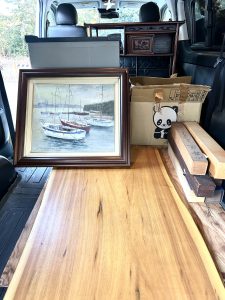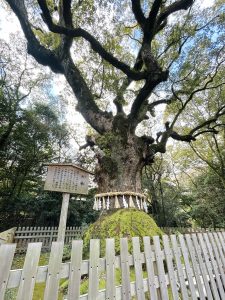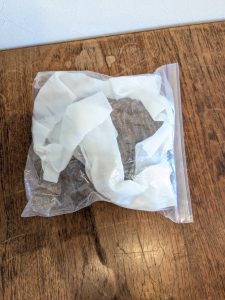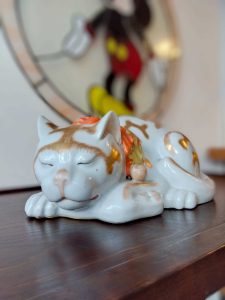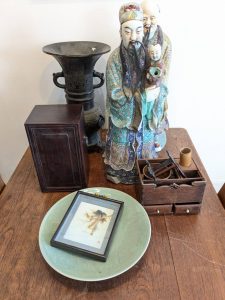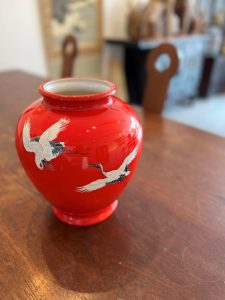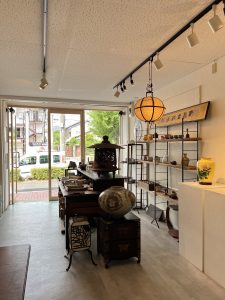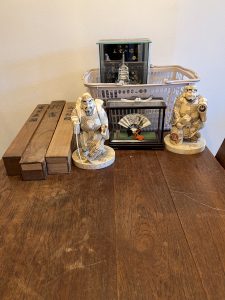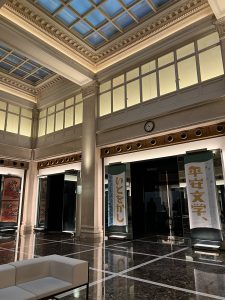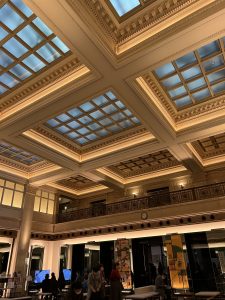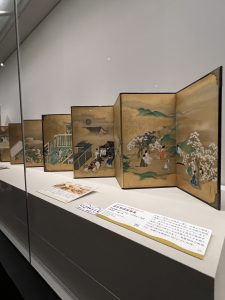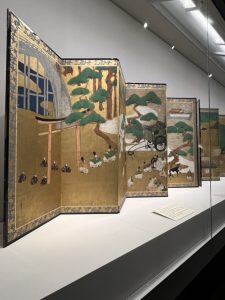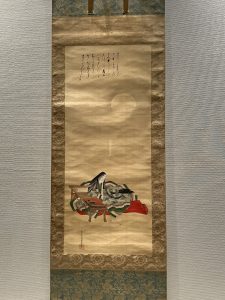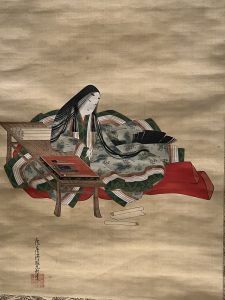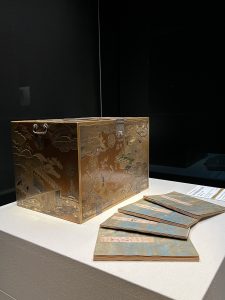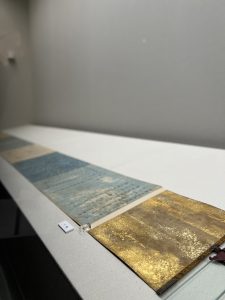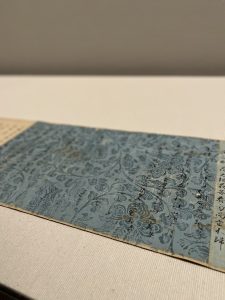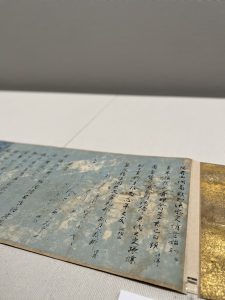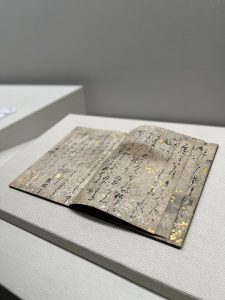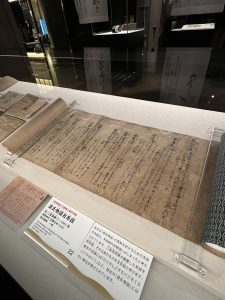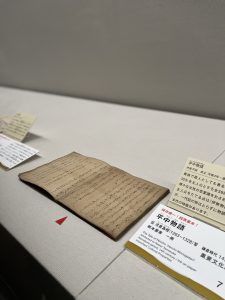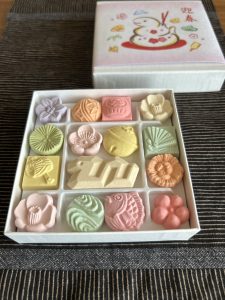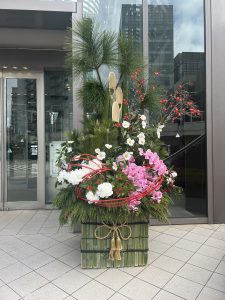本日が今年初投稿となります。まずは遅くなりましたが、新年のご挨拶を。
明けましておめでとうございます。本年も古美術風光舎は、皆さまに寄り添い、お役に立てるよう尽力してまいります。どうぞよろしくお願いいたします。
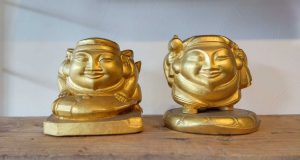
2025年は、十二支の「巳(へび)」年。
蛇には一般的にネガティブなイメージもありますが、古来より豊穣や金運を司る神様として祀られることもあり、神聖な生き物として認識されてきました。たくましい生命力があり、脱皮をするたびに表面の傷が治癒していくことから、医療、治療、再生のシンボルともされています。
また、運気を上げる縁起物としては定番となっており、蛇の登場する夢を見ると吉兆とされていたり、蛇皮の財布や、蛇の抜け殻を財布に入れて持ち歩くと金運が上がるともいわれています。
ところで、「干支(えと)」と「十二支(じゅうにし)」が、同じ意味だと思っている方は多いようですが、本来干支とは十二支(じゅうにし)と十干(じっかん)を組み合わせたものになります。
十二支(子丑寅卯辰巳午未申酉戌亥)は12年周期で繰り返され、古代中国で時刻や方角、年を表すために使われていました。一方、十干は(甲乙丙丁戊己庚辛壬癸)の総称で、古代中国の暦法で順序や番号を表していました。これら十二支と十干を組み合わせたものが干支で、実は全部で60種類あります。
そういえば、「鬼滅の刃」の中の鬼殺隊の階級は、十干(じっかん)に由来して名付けられたものでしたね。
十干とは、この世の万物は木、火、土、金、水の5つの要素から成り立っているという五行思想と、陰と陽という相反する2つの要素が森羅万象を構成しているとする陰陽思想を組み合わせた陰陽五行思想に基づくもので、古代中国の春秋戦国時代に生まれた考え方です。
この十干は5世紀から6世紀ごろに日本に伝わり、方角を表すのに用いられるなど独自の発展を遂げてきました。「鬼滅の刃」の舞台となる大正時代にも使用されていますが、その使い方は主に順位や等級を表すものに変化しています。
例えば、学校の成績や徴兵検査の結果などが甲(こう)、乙(おつ)、丙(へい)丁(てい)の4段階で評価されていたり、順番を決めるのが難しいという意味の「甲乙つけがたい」という言葉の語源も十干になります。現代でも焼酎は甲類・乙類に分類されていますし、危険物取扱者などの資格に甲種・乙種といったように使われています。
というわけで、2025年は正確にいうと干支は「乙巳(きのとみ)」になります。「おっし」「いっし」とも読みます。
この「乙巳」を「いっし」と読んで、子どもたちが日本史で必ず習う、ある有名な政変の名称に使われています。それは「乙巳の変」です。
そんな政変なんか聞いたことがない、という人40、50代の方はけっこういるかもしれません。もし周りにその世代の方がいたら、知っているかどうか聞いてみてください。教科書に出てくるんだよと言ったら、「えーっ!!」となるかもしれません。かくいう私も、子どもの教科書を見るまで知りませんでした。
では「大化の改新」と「乙巳の変」って何がちがうの?となりますよね。
歴史の教科書は定期的に改定が入り、昔の常識と今の常識が少しずつ変わっていくわけですが、大人が知ってる「大化の改新」は、増長した豪族の筆頭である蘇我蝦夷・入鹿を中大兄皇子と中臣鎌足が滅ぼして新政権を樹立。その二人を中心に新しい政治改革を行った政変を指していました。
つまり蝦夷・入鹿暗殺から政治再編までの流れを指し、中大兄皇子と中臣鎌足は悪い政治を正した、ゆえに「大化の改新」を呼んでいました。
しかし歴史の研究が進むにつれ、「あれ?蘇我氏そんな悪いことしてないよね」「ただのクーデターだよね」となり「改新」という言葉から武力による政治主体の転覆を表す「変」という言葉を使うようになったようです。
ちなみに、歴史の教科書では成功したクーデターの事を「変」(例:本能寺の変)、失敗したクーデターを「乱」(例:大塩平八郎の乱)と呼ぶそうです。
というわけで、蝦夷・入鹿暗殺を「乙巳の変」、その後の政治改変を「大化の改新」と分けているそうですよ。
それでは、皆さまの2025年がヘビーな一年になりますように。幸せもヘビーローテーションで!今年もニョロしくお願いいたします。
(スタッフT)
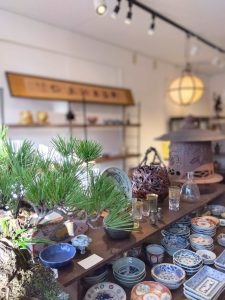
Today is my first post of the year. First of all, I would like to wish you a Happy New Year, even though it is late.
Happy New Year! We at Fumikosha Antiques will continue to make every effort to be close to you and be of service to you in this new year. We look forward to your continued support.
The year 2025 is the year of the snake in the Chinese zodiac.
Although snakes generally have a negative image, they have been worshipped as gods of fertility and money since ancient times and have been recognized as sacred creatures. The snake has a strong life force, and is also considered a symbol of medicine, healing, and regeneration, as each time it sheds its skin, the wounds on its surface are healed.
It is also said that a dream in which a snake appears is a good omen, and that carrying a snakeskin wallet or a snake shell in your wallet will bring you good luck.
By the way, many people seem to think that “zodiac signs” and “twelve signs of the zodiac” mean the same thing, but originally, the zodiac is a combination of the twelve signs of the Chinese zodiac and the ten signs of the zodiac.
The twelve zodiac signs (子丑寅卯辰巳午未申酉戌亥) are repeated in a 12-year cycle and were used in ancient China to indicate time, direction, and year. On the other hand, the 10 signs of the zodiac (A, B, C, D, Boshi, Sami, Geng, Xin, Im, Gye) were used to represent order and number in the ancient Chinese calendar system. The combination of these twelve signs of the Chinese zodiac and the ten signs of the zodiac is the Chinese zodiac, and there are actually 60 types in total.
Come to think of it, the ranks of the demon-slaying squads in “Oni no Kiri no Kai” were named after the ten signs of the zodiac.
The ten signs of the zodiac are based on the five elements of yin and yang, which is a combination of the five elements of wood, fire, earth, metal, and water, and the yin-yang concept that the whole world is composed of two opposing elements, yin and yang.
The ten elements of the zodiac were introduced to Japan around the 5th to 6th centuries, and have developed in their own unique way, such as being used to indicate the direction of the earth. It was also used in the Taisho period (1912-1926), the period in which “Oni no Kane” is set, but its usage has changed to primarily express rankings and grades.
For example, at that time, school grades and draft examination results were graded on a four-point scale (Kou, Otsu, Hei, and Tei), and the term “Kou Otsu ni Tsuiteiranai,” meaning it is difficult to determine the order, is also derived from the ten elements of the Chinese zodiac. Even today, shochu is classified as Class A or Class B, and is used as Class A or Class B in qualifications such as hazardous materials handlers.
Therefore, in 2025, the Chinese zodiac sign will be “Kinotomi” (乙巳) to be exact. It is also read as “oshi” or “isshi.
The Chinese character for “otsumi” is “isshi,” which is used as the name of a famous political upheaval that children must learn about in Japanese history. It is the “Otomi Incident.
There may be many people in their 40s and 50s who have never heard of such a political upheaval. If you know anyone in that generation, please ask them if they have heard of it. If you tell them that it appears in textbooks, they may say, “What? They may say, “Oh my God! I didn’t know about it until I looked at my children’s textbooks.
Then, what is the difference between the Taika Reformation and the Otomi Incident? I suppose you might ask.
History textbooks are revised periodically, and the common sense of the past and the common sense of the present change little by little, but the “Taika Reformation” that adults know is that Prince Nakataio and Kamatari Nakatomi destroyed Soga Ezo and Iruka, who were the first of a growing powerful tribe, and established a new government. This refers to the political upheaval that led to new political reforms centering on these two men.
In other words, it refers to the process from the assassination of Emishi/Iruka to the political restructuring, and Emperor Nakataio and Nakatomi Kamatari corrected the bad politics, hence the term “Taika-no-kaishin” (Taika Reformation).
However, as the study of history progressed, people began to wonder, “What? It seems that as historical research progressed, however, people began to think, “Oh, Mr. Soga didn’t do anything that bad,” or “It was just a coup d’etat,” and they began to use the word “Hen” to describe the overthrow of a political entity by military force instead of the word “Kaishin” (reformation).
Incidentally, history textbooks call a successful coup “Hen” (e.g., Honnoji Incident) and a failed coup “Ran” (e.g., Oshio Heihachiro’s Ran).
So, they divide the assassination of Emishi/Iruka as “Otomi no Hen” and the subsequent political change as “Taika no Kaihin”.
So, in honor of the Year of the Snake 2025, I wish you a heavy year…. We look forward to seeing you again this year.
(Staff T)
*****************
ご実家の整理やお片付けなどをされている方のご相談などが多くございます。
お片付けなどくれぐれもご無理のないようになさってくださいませ。
風光舎では古美術品や骨董品の他にも絵画や宝石、趣味のお品など様々なジャンルのものを買受しております。
お片付けをされていて、こういうものでもいいのかしらと迷われているものでも、どうぞお気軽にご相談下さいませ。
また風光舎は、出張買取も強化しております。ご近所はもちろん、愛知県内、岐阜県、三重県その他の県へも出張いたします。
まずは、お電話お待ちしております。
愛知県名古屋市千種区姫池通
骨董 買取【古美術 風光舎 名古屋店】
TEL052(734)8444
10:00-18:00 OPEN
#出張買取#骨董#古美術#骨董品#絵画#版画#茶道具#刀剣#彫刻
